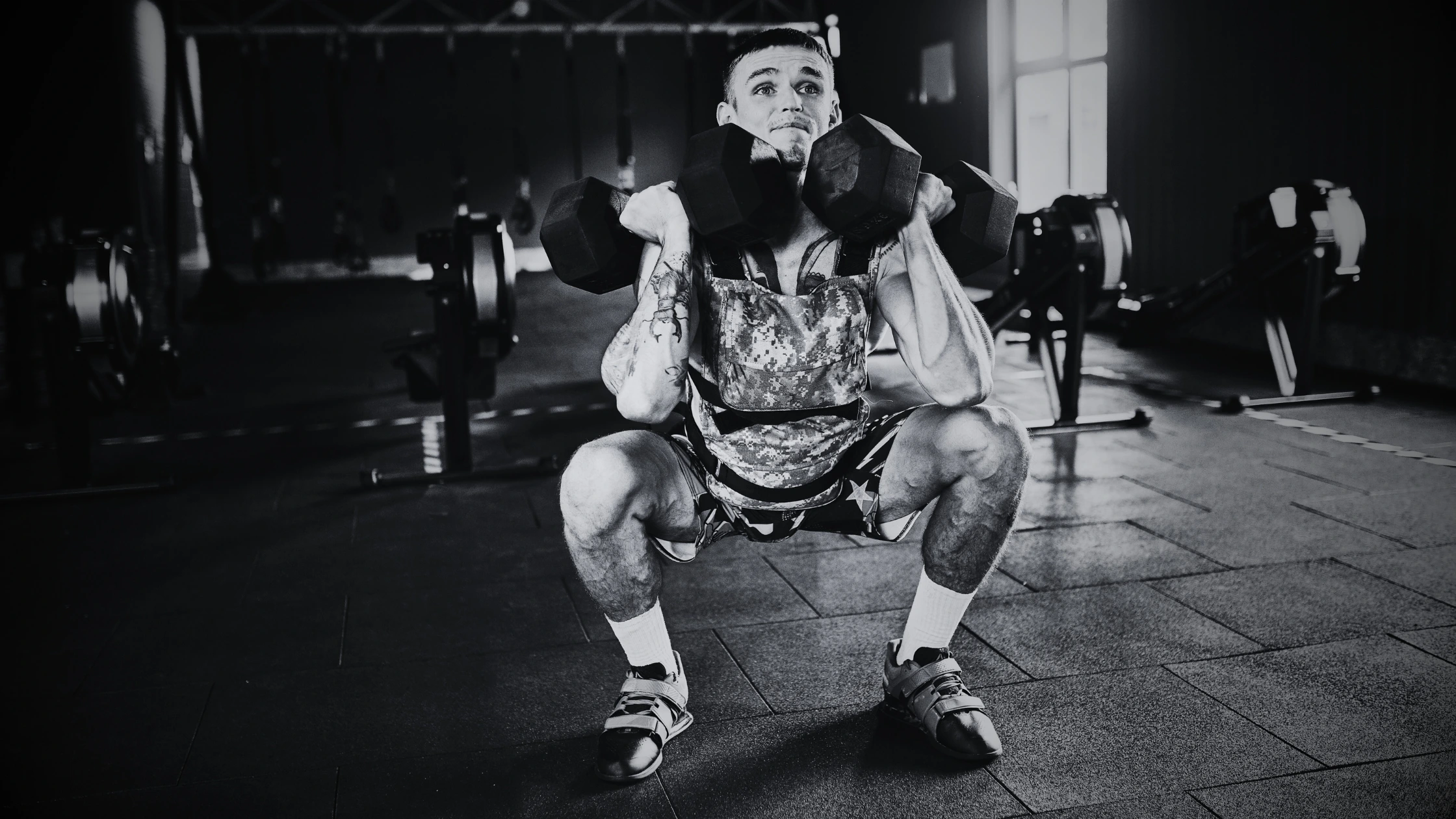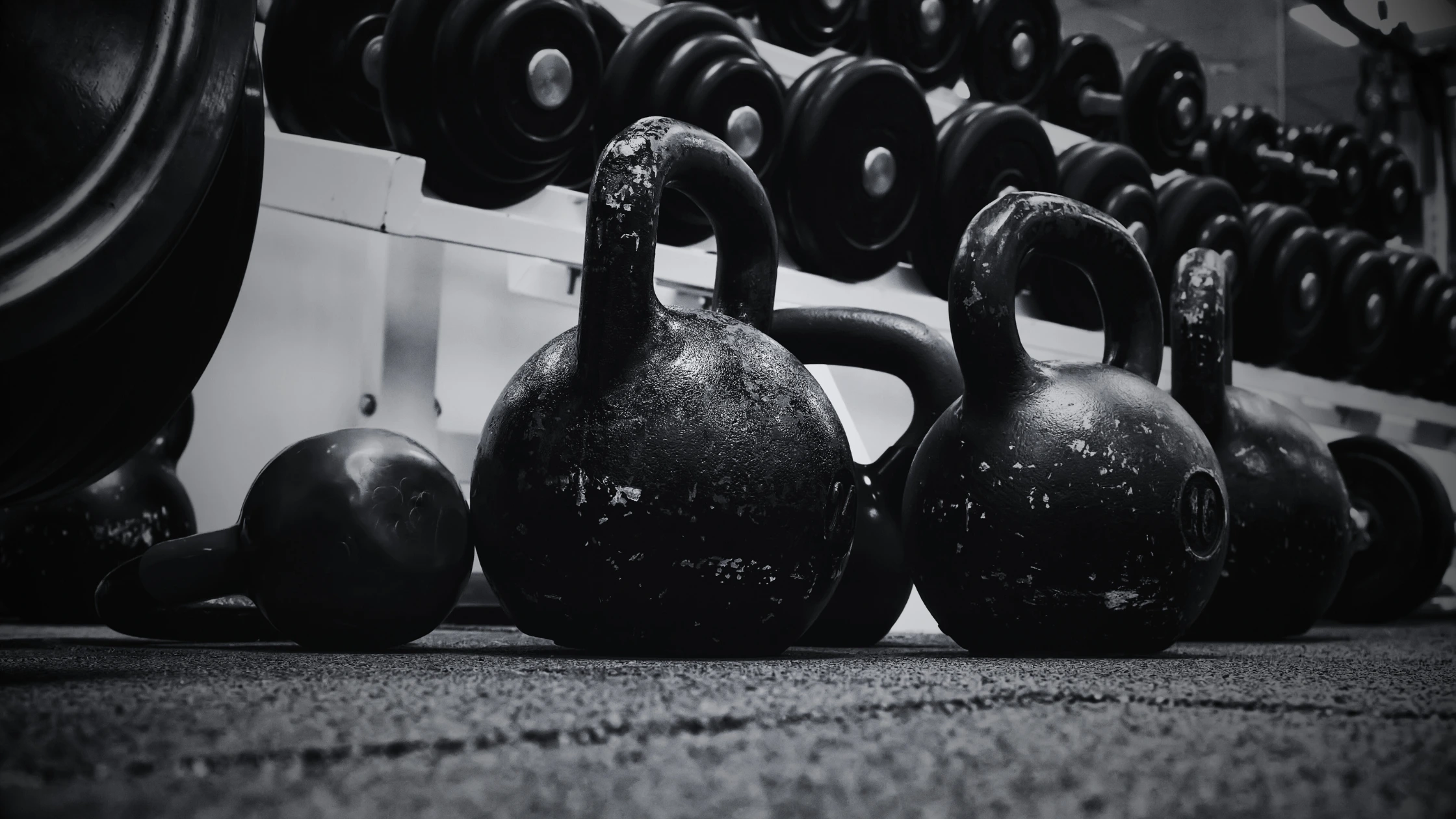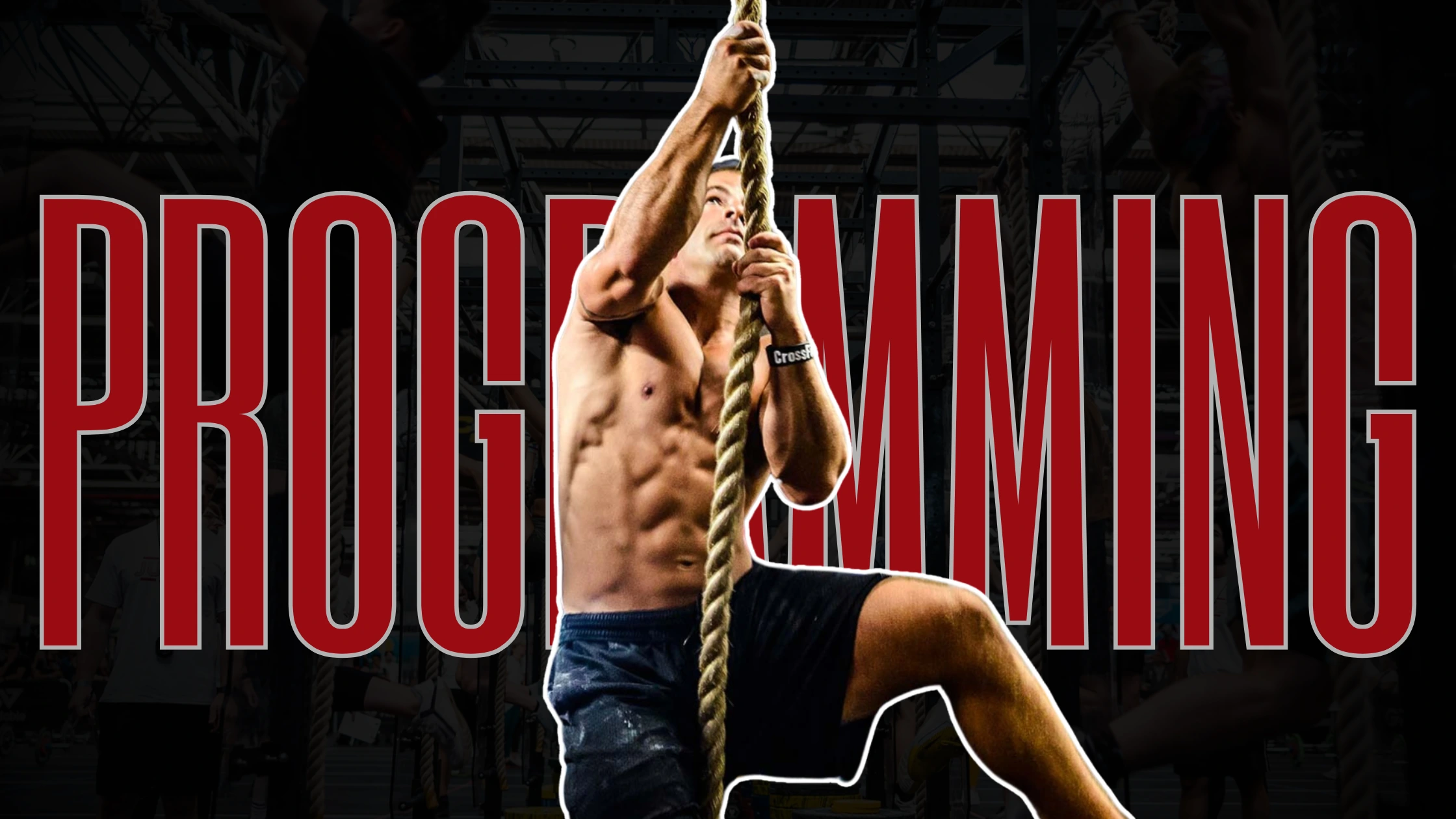With its signature blend of varied functional movements performed at high intensity, CrossFit has revolutionized fitness. The foundation of success in CrossFit lies in finding the best CrossFit programming, whether you’re a rookie just starting out or a pro seeking peak performance.
This guide dives deep into effective CrossFit programming, breaking down methods that cater to everyone—from beginners just getting their feet wet to seasoned athletes aiming to dominate. Learn how to train smarter, push harder, and stay injury-free as you progress from rookie to elite.
Understanding CrossFit Programming Fundamentals
Let’s head over to the fundamental building blocks that create the best CrossFit programming. A well-laid-out CrossFit workout has four vital components: warm-up, strength work, WOD, and cool-down.
Core principles of effective programming
CrossFit’s methodology focuses on constantly varied functional movements performed at high intensity. A typical CrossFit class lasts about 60 minutes. Each session follows this proven structure to maximize results. The programming makes everything scalable, so everyone can participate whatever their fitness level.
Training modalities and their roles
Three distinct modalities are the foundations of CrossFit programming:
- Metabolic Conditioning (M): Focuses on cardiorespiratory capacity and stamina through monostructural activities
- Gymnastics (G): Improves body control, coordination, and functional upper-body strength through bodyweight exercises
- Weightlifting (W): Develops strength, power, and hip/leg capacity through Olympic lifts and powerlifting movements
These modalities combine to create a complete fitness program. The combination helps develop ten physical skills, with strength and endurance as the main focus.
Balancing volume and intensity
Finding the sweet spot between workout volume and intensity is vital to success. The best results come when approximately 70% of conditioning workouts last between 8-12 minutes. All but one of these workouts should stay under 8 minutes or go beyond 12 minutes.
Beginners should start with three training sessions per week. A Monday-Wednesday-Friday pattern works best, with rest days in between. This schedule allows enough recovery time and helps build a consistent routine.
Most workouts should hit 70-85% of your maximum effort. This moderate approach helps steady progress and reduces injury risk. You should limit all-out effort days to just two or three times monthly.

Building Your CrossFit Programming Foundation
Your original CrossFit programming foundation builds on CrossFit’s theoretical hierarchy of development. This framework shapes our training approach and will give a long-term success path.
Assessment and goal setting
A full picture of your fitness level and clear goals should come before any CrossFit workout program. The theoretical hierarchy of development has:
- Nutrition as the foundation
- Metabolic conditioning
- Gymnastics
- Weightlifting
- Sport-specific training
Setting SMART goals (Specific, Measurable, Achievable, Relevant, Time-bound) works best. Don’t just say “I want to get better at CrossFit.” Set clear targets like improving your deadlift or achieving your first muscle-up.
Creating a balanced training schedule
Your CrossFit training program needs a well-laid-out schedule to work. Here’s what we suggest for beginners:
- Start with 2-3 sessions per week
- Gradually increase to 5 days per week over 3-6 months
- Follow a 3-on-1-off pattern once adapted
Each training session should run about 60 minutes. This gives you enough time for warm-up, skill work, and the WOD. Your body needs this structure to avoid burnout and recover properly between sessions.
Equipment and facility considerations
The best CrossFit programming needs specific equipment. Your essential gear list should have:
- Barbells and bumper plates for weightlifting movements
- Pull-up bars for gymnastics work
- Kettlebells for dynamic exercises
- Rowing machines for metabolic conditioning
- Plyo boxes for explosive movements
Without doubt, equipment’s quality and maintenance affect your safety and performance. To cite an instance, proper bumper plates let you safely drop weights during Olympic lifts.
Your facility’s layout should fit different movement patterns with enough space for solo and group training. You need designated areas for each training type – weightlifting zones, cardio equipment spaces, and open areas for bodyweight movements.
These foundational elements create an environment that helps you progress in your CrossFit experience. Good assessment, structured scheduling, and the right equipment setup will position you well to reach your fitness goals through consistent training.
Also Read: Best Equipment for CrossFit Home Gym
Designing Effective CrossFit Workout Programs
Let’s work with our basic knowledge and create killer WODs that get results. Our CrossFit programming experience shows that you need both science and art to design workouts that work.
Workout structure and components
A well-laid-out CrossFit workout has four key parts:
- Warm-up (5-10 minutes)
- Strength/Skill work (15 minutes)
- WOD (20-30 minutes)
- Cool-down (5 minutes)
This structure will give a complete fitness workout while keeping intensity levels right. Most of our workouts should stay within the 8-15 minute timeframe. This helps maximize intensity without too much volume.
Movement selection and sequencing
The art of programming comes from picking movements that work well together. Here’s our approach to movement selection:
| Movement Type | Purpose | Example Pairing |
|---|---|---|
| High Power | Neuroendocrine response | Clean & Jerk + Box Jumps |
| Compound | Training economy | Pull-ups + Thrusters |
| Skill-based | Technical development | Muscle-ups + Ring Dips |
Focus on couplets and triplets in programming, as these combinations provide optimal stimulus while remaining simple and effective. Sequence movements to allow specific muscle groups to rest while maintaining overall intensity.
Scaling options and progressions
CrossFit’s beauty lies in how you can scale it. We meet athletes where they are and keep the workout’s intended stimulus. Three main factors come into play when scaling:
- Load adjustments (70-85% of 1RM for strength work)
- Volume modifications (reducing total reps or rounds)
- Movement progressions (breaking complex movements into manageable steps)
Progressions help teach athletes at any level. Athletes who try complex movements without proper progression often face technical problems. The main goal remains the same: every athlete gets the right training stimulus while building proper movement patterns.
Complex movements like the snatch or muscle-up need step-by-step progressions. This builds athlete’s confidence and skill. The warm-up time works great to fix technical issues before the actual workout begins.
Programming for Different Skill Levels
Experience in designing effective CrossFit programming has demonstrated that a one-size-fits-all approach is ineffective. This discussion will detail how programs are tailored for different skill levels to maximize results.
Beginner programming considerations
New CrossFit athletes need a solid foundation. They should train 3-5 times per week with enough recovery between sessions. Our approach has:
- Learning fundamental movements with proper form
- Mastering simple compound lifts
- Developing gymnastics foundations
- Building aerobic capacity through simple metcons
Put technique ahead of intensity as a newcomer. This helps prevent injury and establishes proper movement patterns that are the foundations of more advanced skills.
Intermediate program design
Athletes who master the basics, usually after 6-12 months of consistent training, move to more complex programming elements. At this stage, two main approaches are used:
- Body Part Emphasis
- Alternating upper and lower body focus
- Better recovery management
- Progressive skill development
- Outcome Emphasis
- Finding and fixing weaknesses
- Specialized skill work
- Higher training volume
Add structured strength cycles and more technical gymnastics movements. This phase helps athletes become skilled at Olympic lifts and advanced bodyweight skills.
Advanced athlete programming
Experienced athletes need more sophisticated and periodized programming. Here’s how to structure advanced training blocks:
| Training Phase | Focus Area | Duration |
|---|---|---|
| Block 1 | Strength/Skills | 4-6 weeks |
| Block 2 | Mixed/Aerobic | 4-6 weeks |
| Block 3 | Competition Prep | 4-6 weeks |
Advanced athletes need more specialized programming. They start working on:
- Complex skill combinations
- Higher training volume
- Specific competition preparation
- Periodized strength cycles
These athletes should have built substantial work capacity. Advanced programming needs careful management of training volume and intensity. This prevents burnout while maintaining progress.
A systematic approach to programming across skill levels enables consistent progress for athletes who follow these guidelines. This approach emphasizes respecting natural skill progression and providing ample time for adaptation at each level to ensure success.

Implementing Progressive Overload in CrossFit
Progressive overload is crucial for optimal CrossFit programming. Experience shows how systematic progression can turn average athletes into exceptional performers.
Volume progression strategies
Gradual volume increases form the core of effective CrossFit workout programs. Research shows that adding 2.5 pounds to lifts every week or two creates substantial strength gains over time. Structure volume progression this way:
- Base Volume Phase
- Establish foundational work capacity
- Master movement patterns
- Build aerobic endurance
- Progressive Phase
- Increase total reps systematically
- Add complexity to movements
- Extend workout duration
Intensity manipulation techniques
Intensity management plays a vital role in CrossFit training program success. Create a structured approach to intensity progression:
| Intensity Level | Training Focus | Implementation |
|---|---|---|
| Foundation | Technique | 60-70% of 1RM |
| Development | Work Capacity | 70-85% of 1RM |
| Performance | Power Output | 85-95% of 1RM |
Adjust these variables based on individual response and recovery capacity. This way, most athletes maintain consistent progress without risking burnout.
Performance tracking methods
Performance metric tracking helps optimize CrossFit programming methods. A detailed tracking system should have:
- Workout logs with weights, reps, and times
- Progress measurements for standard WODs
- Recovery indicators and energy levels
Detailed records serve multiple purposes. They help identify areas for improvement and set realistic progression goals.
Digital platforms provide optimal tracking results. Beyond the Whiteboard has become essential in the CrossFit industry, as many Games athletes use it to create and share their training programs. MyWOD offers straightforward tracking for simple metrics.
These practical guidelines will help you implement effective progressive overload:
- Record every training session
- Note variables like:
- Sleep quality
- Nutrition timing
- Stress levels
- Movement quality
Success in progression comes from understanding that “less than perfect” is different from unsafe technical breakdown. A good CrossFit workout program design emphasizes this difference to ensure safety and progress.
Threshold training creates the foundation of effective intensity application. This approach cycles between perfecting movement patterns and increasing difficulty. Athletes develop technical proficiency while optimizing their progress through this method.
Individual capabilities should match intensity levels rather than external standards. This individual-specific approach consistently produces better results in athletes’ development.
Optimizing Recovery and Preventing Burnout
Life in the box means challenging our limits. But knowing how to recover matters as much as crushing those WODs. You need to be strategic about recovery and preventing burnout in our CrossFit training program.
Recovery programming strategies
Quality sleep forms the foundations of effective recovery. Research shows that CrossFit athletes need between seven to nine hours of sleep each night to maintain optimal performance. Experience also helps identifying these recovery indicators to monitor:
- Heart rate variability
- Resting heart rate
- Movement quality
- Mental focus
- Overall energy levels
Nutrition plays a vital role in recovery. Our bodies just need the right fuel to repair and rebuild after intense training sessions. You should focus on eating a wide variety of foods to prevent micronutrient deficiencies.
Deload week implementation
The right timing and method for deload weeks will determine your long-term success in CrossFit workout program. Program deload weeks every four to twelve weeks, based on training intensity and individual response.
| Deload Week Component | Standard Training | Deload Modification |
|---|---|---|
| Volume | Regular | 30-40% reduction |
| Intensity | 70-85% | Maximum 70% |
| Skill Work | Complex | Technical focus |
| Metcon Duration | Standard | Reduced by 25% |
Deload weeks help us maintain movement patterns while reducing overall body stress. This approach prevents overtraining syndrome, which can demonstrate through various symptoms including:
- Loss of motivation
- Persistent fatigue
- Elevated blood pressure
- Sleep disturbances
Managing training stress
CrossFit programming methods should include a complete approach to stress management. The goal is to balance between training intensity and recovery.
Physical stress management includes:
- Active recovery sessions
- Mobility work
- Foam rolling
- Strategic rest days
We recommend taking unscheduled rest days when needed. This flexibility prevents resentment toward training and keeps long-term enthusiasm for the sport.
Competitive athletes benefit from incorporating an off-season into yearly planning. This structured approach allows for:
- Physical recovery from competition demands
- Mental refreshment
- Skill development without performance pressure
- Foundation building for the next season
Your body sends clear signals about training stress. Excessive fatigue, muscle soreness, or shortness of breath might indicate insufficient recovery. Research suggests that poor recovery from WODs may increase the risk of severe injuries.
This systematic approach to workout intensity prevents overtraining. Experience shows that most training sessions should target 70-85% of your maximum effort. This moderate approach ensures steady progress while reducing burnout risk.
Periodization helps manage long-term stress effectively. Athletes going all-out every day typically burn out within six weeks without proper periodization. Strategic combination of low, medium, and high-intensity outputs helps athletes avoid excessive intensity while making continued progress.
These active recovery techniques work best between sessions:
- Light mobility work
- Swimming
- Yoga
- Easy rowing or cycling
These activities boost blood flow and recovery without stressing your system. It also helps to track various metrics to optimize recovery protocols. Athletes should monitor sleep quality, nutrition timing, and overall stress levels to make smart decisions about training intensity.
Best CrossFit Programming: Reddit Discussions
Reddit offers a wealth of information for those seeking best CrossFit programming advice from experienced athletes, coaches, and enthusiasts. With discussions spanning firsthand reviews to tailored suggestions, these threads highlight programs that resonate with specific goals and preferences. Let’s explore some of the most insightful recommendations from the CrossFit community.
Linchpin is highly praised by Redditors for its efficiency and variety. One user shared, “I never spend more than an hour in the gym doing Linchpin. It includes warm-ups and cool-downs, balances intense and light days, and offers optional accessory work. It’s a program that truly fits into a busy schedule.” This program is perfect for those who want simplicity without compromising results. It’s often considered a go-to for anyone seeking shorter yet highly effective workouts.
If you’re aiming for a hybrid athlete vibe with a first responder edge, CRONUSFIT might be the right fit. A Redditor described it as, “A ton of variety and volume. It’s great for military and first responders but can take up to 90 minutes per session. Scaling might be needed for some metcon weights.” CRONUSFIT offers both free and paid options, making it accessible for athletes at different levels while catering to those seeking performance-oriented programming.
HWPO (Hard Work Pays Off), created by five-time CrossFit Games champion Mat Fraser, garners mixed reviews. While some users appreciate its structured approach, others find it less engaging. One Redditor explained, “HWPO Flagship is a solid program for overall fitness. It’s systematic and delivers results, but the metcons feel repetitive, with too much rowing for my liking.” For those who thrive on discipline and don’t mind a bit of monotony, HWPO could prove to be a game-changer.
Training Think Tank (TTT) often pops up in Reddit discussions as a fan favorite. A user commented, “It’s well-structured and thought out. They offer scaled options and have specific programs for weaknesses like gymnastics or endurance.” This program is ideal for athletes looking to refine their skills and address specific areas of improvement, making it a versatile choice for focused development.
Programs specifically designed for first responders and military personnel are frequently recommended within Reddit’s fitness communities. HAMR by Power Athlete, for example, is tailored for law enforcement officers and military professionals, combining strength, hypertrophy, and CrossFit-style conditioning. Another popular option is Everyday Hero by Mayhem, which is geared toward first responders and balances strength training with bodybuilding elements. As one Redditor noted, “HAMR feels like it’s made for someone in my line of work—practical and challenging without being overkill.”
These tips consistently appear throughout Reddit’s vast discussions:
- Know Your Goals: Whether it’s improved health, better performance, or bodybuilding aesthetics, clarity is key.
- Test and Adjust: Many users recommend trying a few programs to see what resonates.
- Prioritize Enjoyment: As one Redditor put it: “Find a program you genuinely enjoy—fun is as important as progress.”
Conclusion
CrossFit programming offers athletes a roadmap to expand their limits while honing the fundamentals. With the best CrossFit programming, average athletes can transform into absolute beasts at the box. Elite CrossFitters know their success hinges on balancing crushing intensity with strategic recovery. From dominating metcons to nailing complex movements, the magic lies in a well-structured progression that ensures long-term gains.
FAQs
Q1. What is the ideal CrossFit training frequency for beginners? For beginners, it’s recommended to start with 3 training sessions per week, typically following a Monday-Wednesday-Friday pattern with rest days in between. This approach allows for adequate recovery time while establishing a consistent routine.
Q2. How should CrossFit workouts be structured for optimal results? An effective CrossFit workout typically consists of four components: a 5-10 minute warm-up, 15 minutes of strength/skill work, a 20-30 minute Workout of the Day (WOD), and a 5-minute cool-down. This structure ensures all aspects of fitness are addressed while maintaining proper intensity levels.
Q3. What is the recommended intensity level for most CrossFit workouts? Most CrossFit workouts should be performed at 70-85% of your maximum effort. This moderate approach ensures steady progress while reducing the risk of burnout or injury. All-out effort days should be limited to just two or three times per month.
Q4. How often should deload weeks be implemented in CrossFit programming? Deload weeks are typically programmed every four to twelve weeks, depending on training intensity and individual response. During these weeks, overall volume is reduced by 30-40%, and intensity is capped at 70% of regular training levels to prevent overtraining and promote recovery.
Q5. Can older adults start CrossFit, and how should they approach it? Yes, CrossFit can be adapted for individuals of all ages, including older adults. The key is to start slowly, focus on proper form and technique, and scale workouts as needed. It’s important to listen to your body, progress gradually, and prioritize recovery to ensure safe and effective training.


3 thoughts on “Best CrossFit Programming Methods (Ultimate Guide)”
Comments are closed.